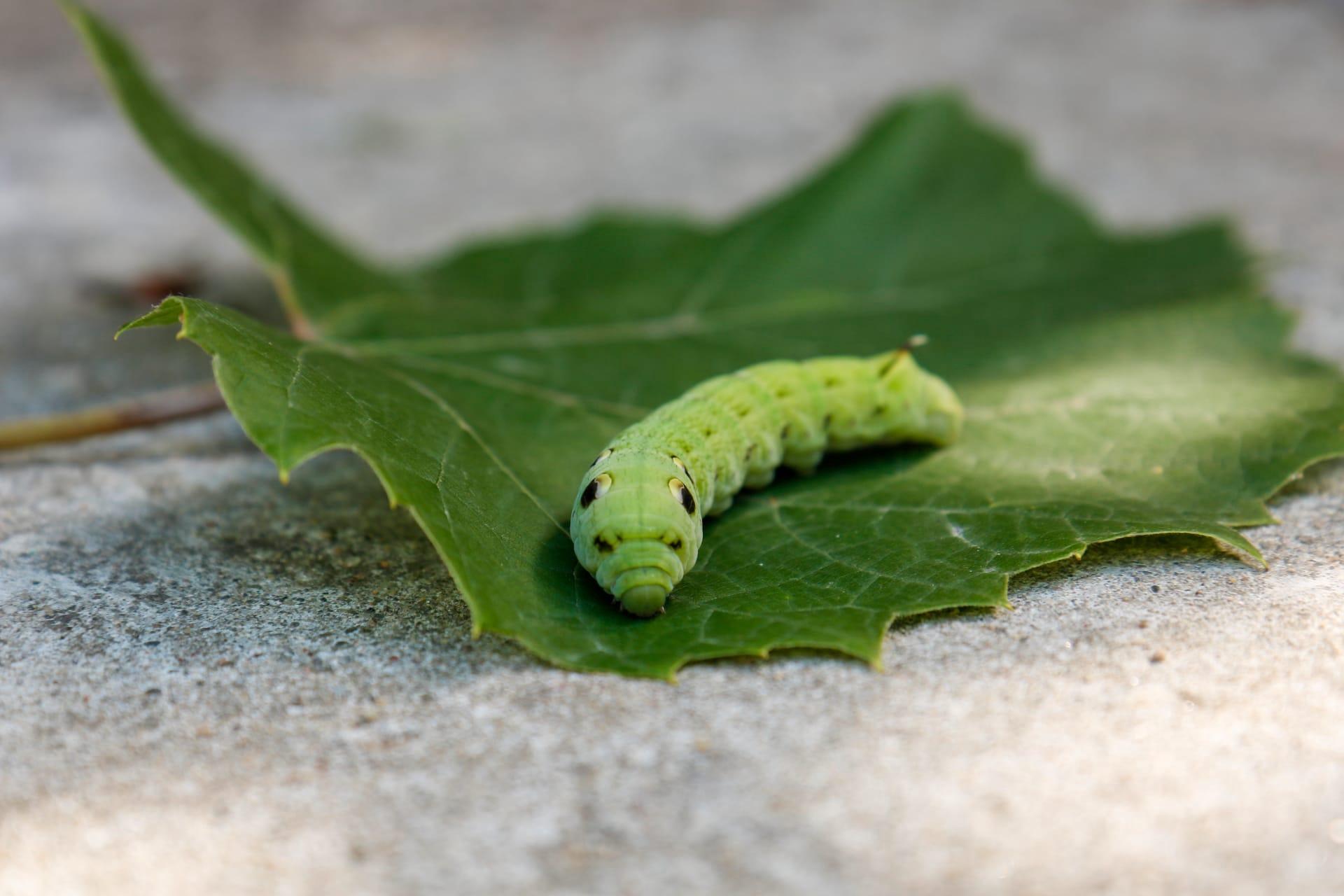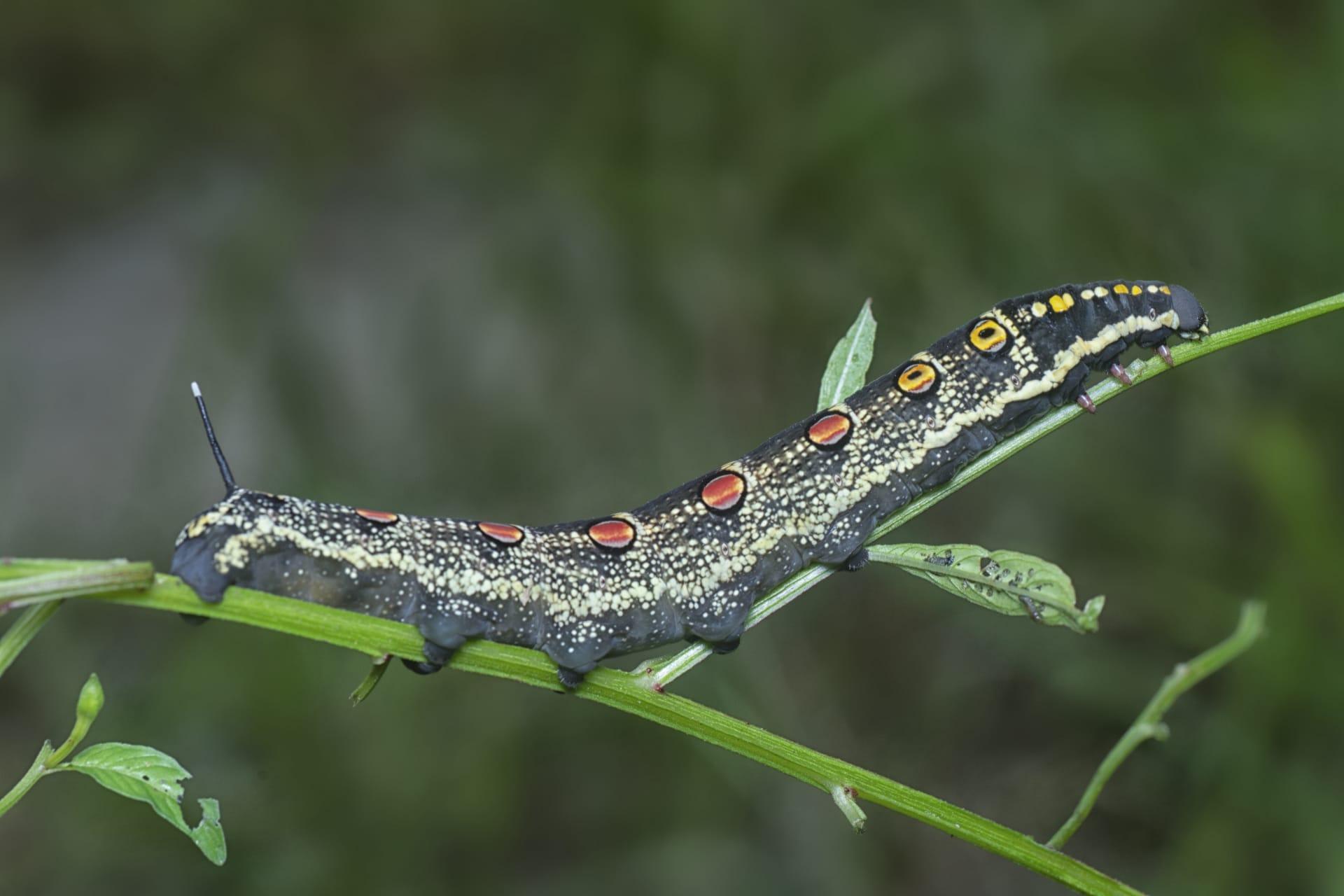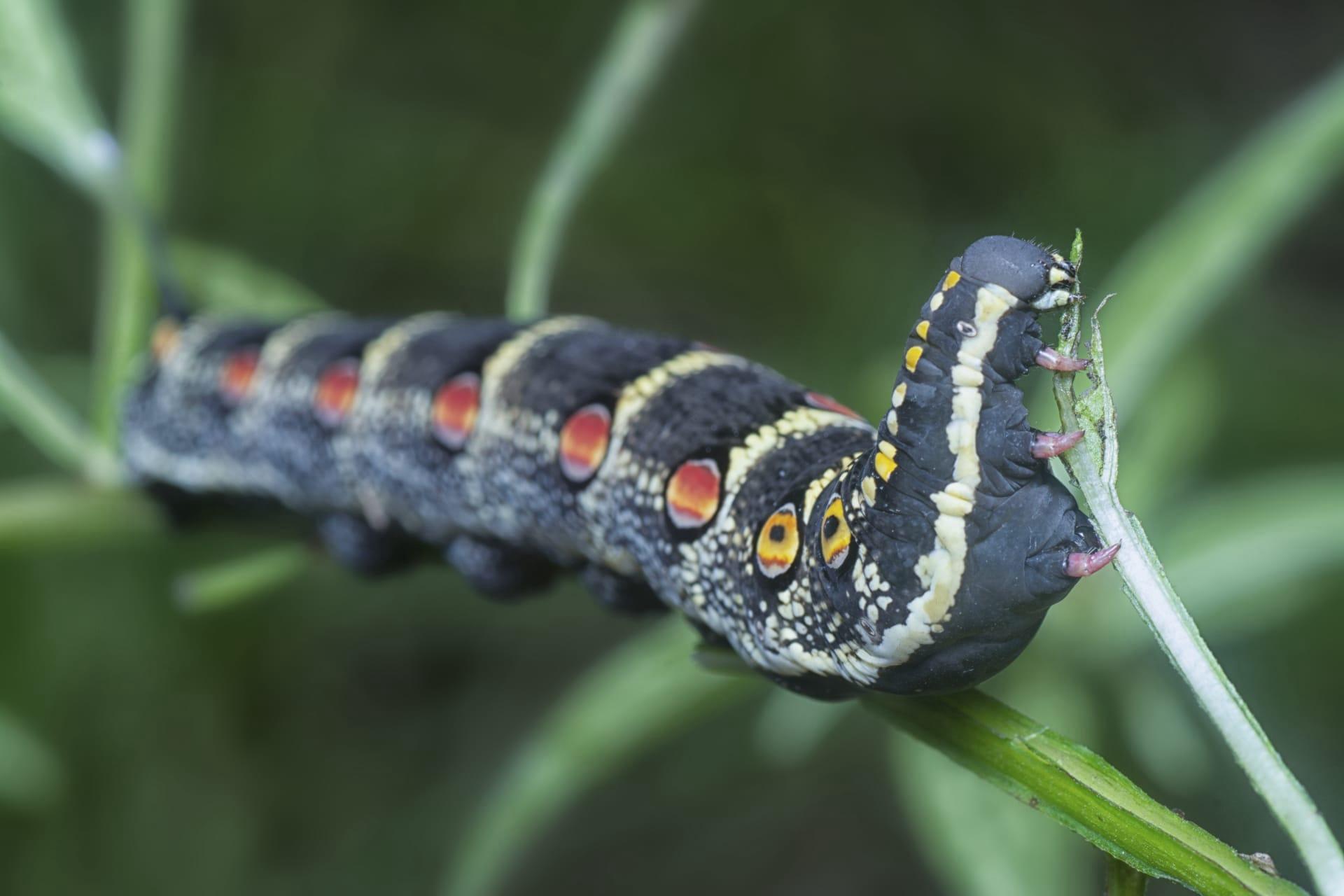Horn Worm
- Home /
- Mini Encyclopedia /
- Animal /
- Horn Worm
1
Horn worms, belonging to the Sphingidae family, are a fascinating group of moths in their larval stage. This family comprises around 1,450 species. The most common species are the Tomato Hornworm (Manduca quinquemaculata) and the Tobacco Hornworm (Manduca sexta). These species are closely related and often confused with each other due to their similar appearance. The larvae are known for their characteristic 'horn' - a spike-like projection on their rear end.
Horn worms are predominantly found in the Americas. The Tomato Hornworm is widely distributed in the United States and Northern Mexico. They thrive in diverse habitats ranging from lowland areas to mountainous regions, but are most commonly found in gardens and fields where tomato plants are grown. The Tobacco Hornworm, on the other hand, has a similar distribution but is more often associated with tobacco fields. These species have been observed at altitudes ranging from sea level to over 2,000 meters, demonstrating their adaptability to various environments.

2
Question: Are horn worms harmful to plants?
Answer: Yes, horn worms can be quite detrimental to plants, especially in gardens and agricultural settings. The Tomato Hornworm and the Tobacco Hornworm are notorious for their voracious appetite for the leaves of solanaceous plants like tomatoes, potatoes, eggplants, and peppers. A single larva can strip a plant of its foliage in a matter of days, leading to significant crop damage. However, it's important to note that they are part of the natural ecosystem and play a role in the food chain.

3
Horn worms have developed several survival strategies to thrive in their habitats. One key strategy is their remarkable camouflage. The larvae's green coloring allows them to blend seamlessly with the leaves they feed on, making them less visible to predators. Additionally, the 'horn' at their rear end can serve as a deterrent, as it makes them appear more threatening to potential predators.
Another survival tactic is their rapid growth rate. Horn worm larvae can grow at an astonishing speed, sometimes increasing their body size several times over just a few weeks. This rapid growth minimizes the time they spend in their vulnerable larval stage, reducing the chances of predation. The larvae also engage in a behavior known as 'frass flicking', where they flick their waste away from their feeding area, helping to conceal their presence from predators who might be attracted by the scent.

4
In the ecosystem, horn worms play a significant role as both prey and pest. As larvae, they serve as a food source for various predators, including birds, small mammals, and other insects like parasitic wasps. The presence of horn worms can therefore support the biodiversity of the ecosystem by sustaining these predator populations.
Conversely, horn worms are also considered pests in agricultural and gardening contexts due to their consumption of foliage from economically important crops. Their feeding habits can lead to significant damage to plants, impacting crop yields. This dual role highlights the complex interactions horn worms have within their ecosystems, balancing their contributions to biodiversity with their potential as agricultural pests.

5
Film: "The Secret Life of Moths" is a documentary produced in Finland in 2016. It delves into the fascinating world of moths, including the life cycle of horn worms. The film reveals the intricate relationship these insects have with their natural environment, highlighting their transformation from caterpillars into beautiful moths.
Book: "Caterpillars of Eastern North America" by David L. Wagner, published in the United States in 2005, provides a comprehensive guide to caterpillars, including horn worms. Wagner's work offers detailed descriptions, feeding habits, and habitats, making it a valuable resource for both enthusiasts and professionals.
Book: "The Moth Book: A Guide to the Moths of North America" by W.J. Holland, published in the United States, is a classic work in the field of lepidopterology. This book includes detailed descriptions of various moth species, their life cycles, and habitats, with a section dedicated to horn worms, providing insights into their role in the broader moth family.